#non-lithographic
Text
Shrinking the World: Unveiling the Top-Down vs. Bottom-Up Battle in Nanofabrication
Demystify top-down vs. bottom-up approaches in nanofabrication & explore the exciting potential of non-lithographic techniques shaping the future!
Imagine shrinking yourself down to the size of a grain of rice and entering a world where materials behave differently, where properties like strength, conductivity, and reactivity change dramatically at the nanoscale. This is the fascinating realm of…

View On WordPress
0 notes
Photo
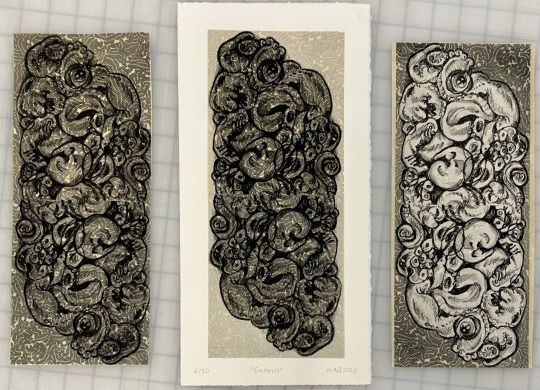
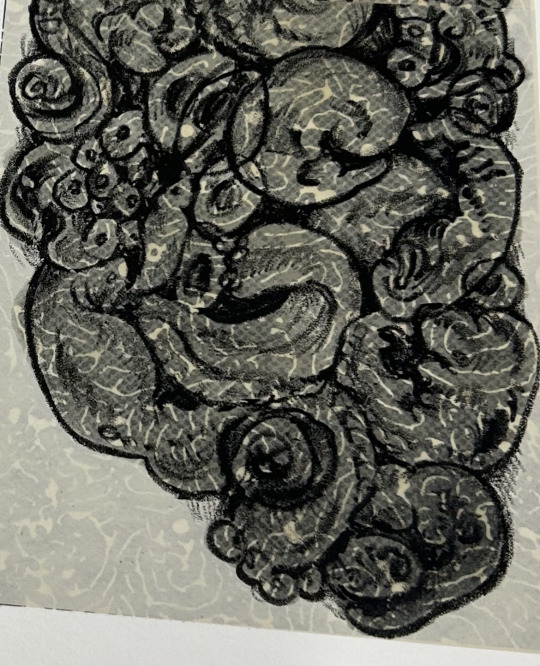
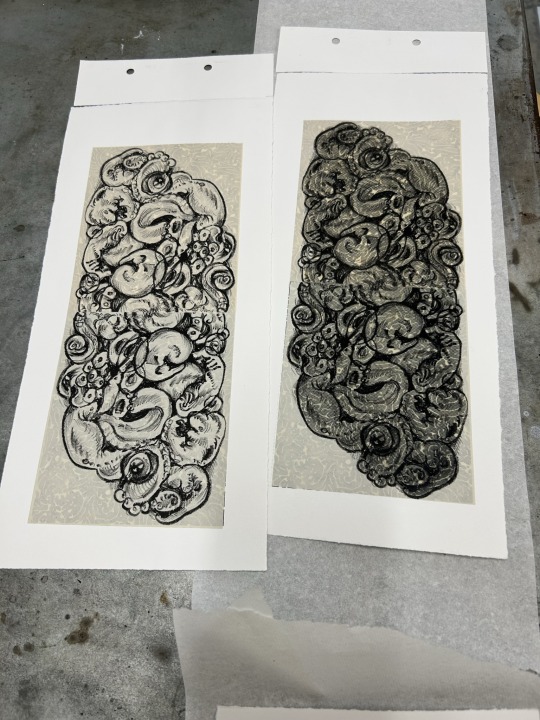
“Genesis”
photo plate lithography, stone lithography, chine collé, beeswax. 5x12″ image 7x14″ paper
04/25/2023
15 notes
·
View notes
Text
So I’ve been seeing a post about the semantic drift from “artist” to “content creator” recently, and it mentions how the term “art” use to encompass non-visual art form in the common vocabulary, and people had to specify "visual artist". And that’s true.
But it also reminds me of how a lot of what we easily considers art nowadays weren’t always considered art.
During the emergence of the Poster (and lithographic print), there’s a lot of debate on whether mass produced commercial work should be considered art. Alphonse Mucha, the guy who basically defined Art Nouveau, wished to be recognized for his “serious art” (mostly religious/spiritual murals) instead of his more popular commercial work. He didn't think his commercial work had as much artistic value. These were his commercial work, by the way.
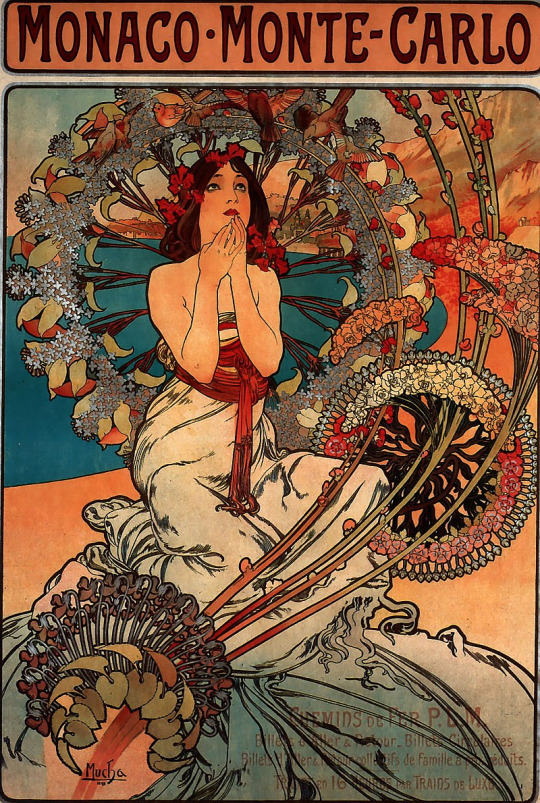
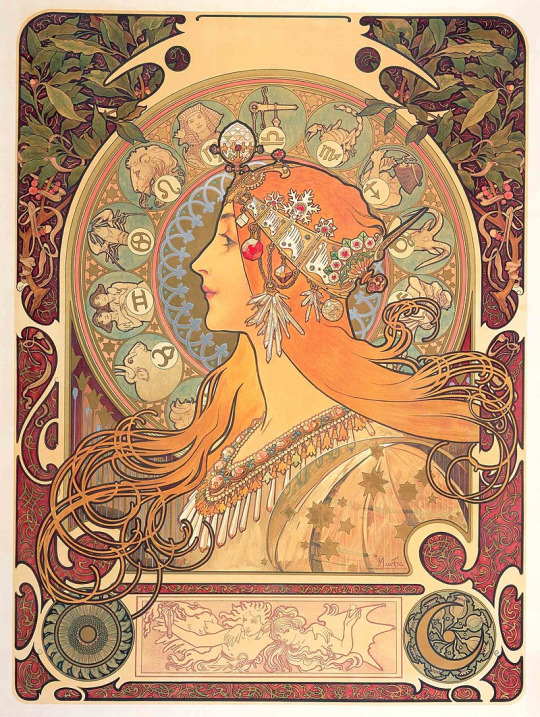

When I first learned about his views I was shocked. Of course these have artistic value. They're hand-drawn and gorgeous! Does the fact it's mass produced or made to sell cigarette/advertise plays lessen their intrinsic "artisticness"?
In the past, there’s always been a distinction between the artist and the craftsman. Carpenters and weavers made beautiful objects, but these objects were considered product, not art.
As a graphic designer, I’ve worked with as many colleagues (both graphic designers and illustrators) who insist they’re artists as the ones who insist they aren’t. “We don’t make pretty things that just sits in a gallery, we make PRODUCTS that serves a FUNCTION.” Personally, I would also hesitate to call the branding/advertising I’ve created art, even when a lot of illustration is involved.
Now, as social media becomes the world’s biggest gallery, the term “art” began to conflate with “illustration” or simply “images (excluding the likes of selfies/personal journalism photos)”. And with the proliferation of AI generated images, the meaning of “art” is being debated to hell and back again.
Both proponents and detractors of AI would say “AI can’t take away art or the human need to create because it can't make meaning” and people would point out moving works from the gallery or how children have so much fun and passion drawing badly. This is talking about "art" from the galleries, art as a form of expression, art as vessels for meaning. It's not actually about "artists" as "craftsmen".
But that's not actually how most "artists" (illustrators, copywriters, animators) make a living. Most artists sell their skill as labour to make commercial products, whether that's commission or merchandise or advertising. And that's what's being replaced by AI. It's never about the value of the art in the galleries/museums. It's not even about creative expression. They pay me to make their ads pretty and now the AI can make the ad pretty so they don't have to pay me anymore. I can still make art out of the passion of my heart tho, nobody's stopping me, and they will still have meaning and value, it might just not be monetary.
I just think... It doesn't make sense to argue it both ways, you know? The vaguery of what art is. If we're arguing art is defined by it's capacity to hold meaning and the divine act of creation then we also have to admit a lot of what we think of as art isn't art by the same definition.
19 notes
·
View notes
Text
SET FIFTEEN - ROUND ONE - MATCH FIVE


“Capriccio of a Mediterranean Seaport” (1936-38 - Rex Whistler) / “Zodiac calendar for La Plume” (1896 - Alphonse Mucha)
CAPRICCIO OF A MEDITERRANEAN SEAPORT: It’s this huge long mural (+ side walls!) with tromp l’oeil effects and lots of little details and it makes me soooooooo. always that painting is in my brain. (@knocking-on-peoples-non-doors)
ZODIAC CALENDAR FOR LA PLUME: mucha is just the ICONIC art nouveau artist. ugh so inspiring. who cares that he hated art nouveau it makes me want to learn how to draw (@kaerran)
(“Capriccio of a Mediterranean Seaport” is a trompe-l'œil, oil on canvas painting by Rex Whistler which is 58 feet (17.7 m) long and covers an entire dining room wall of Plas Newydd, a building owned by the National Trust.
“Zodiac calendar for La Plume” is a colour lithograph by Alphonse Mucha that was distributed as a calendar for La Plume magazine. It measures 65.7 x 48.2 cm (25.9 x 19 in) and can be seen at the Mucha Museum in Prague.)
#art that fucks you up tournament#polls#atfyu polls#id in alt text#gosh that cropping strikes again#we clearly should've organized the tournament by image size
30 notes
·
View notes
Photo
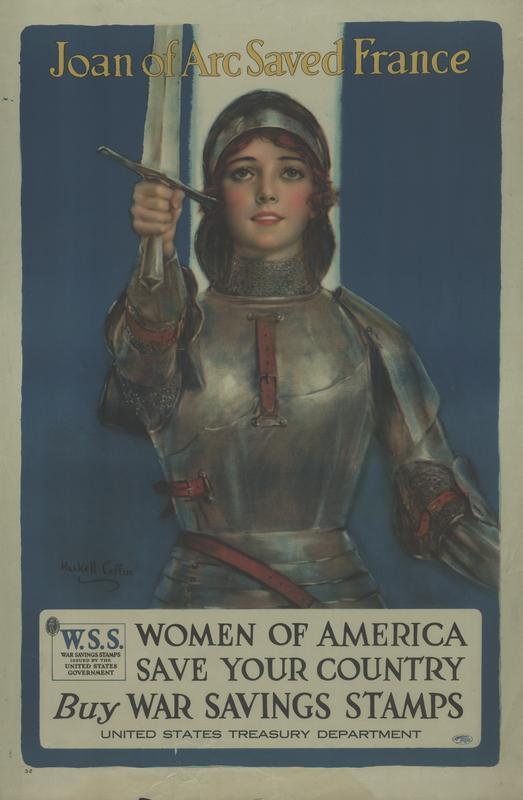
#WordyWednesday
Lithography: An illustration process invented in 1798 by Alois Senefelder that is neither intaglio nor relief. Lithography involves writing on a flat surface with a grease-crayon and then applying an acid solution to slightly etch the non-drawn surfaces. The entire surface is then covered in water, which does not lie on the greasy marks (as water and grease repel one another). A greasy printing ink is then applied, which only settles on the greasy drawing, and can then be printed. Lithography can be done using special limestones or using metal plates. It allows color printing in a way that previous illustration techniques did not and is still practiced by artists today.
Image: Coffin, Haskell, 1878-1941. Joan of Arc saved France: women of America save your country. New York: United States Printing & Lithographic Co., 1918?. D522.25 .C64 1918. Digitally available at the MU Digital Library.
(via Jobbing — Lithography · Rare Books: A Glossary · Special Collections and Archives)
#printing history#printmaking#lithography#wordy wednesday#wordywednesday#john henry#special collections#specialcollections#rare books#rarebooks#bookhistory#poster#posters#world war i#great war#joan of arc#wwi
31 notes
·
View notes
Text
The WIP Name Game
Tagged by the amazing @ally147writes, even though I write at a glacial pace. I guess these count as WIPs? Who knows? I certainly don't.
Will I finish any of these? I hope so or the shame will follow me for years :).
Some of these things have titles and others don't because I obsess a bit too much about having the Perfect Title.
Rules: Post the names of all the files in your WIP folder, regardless of how non-descriptive or ridiculous. Let people send you an ask with the title that most intrigues them and then post a little snippet of it or tell them something about it!
Adrift
Incandescence
Pinholes, Lithographs, Film
Heterochromia (subject to change)
A Shrine to Our Longevity
Rhodonea (subject to change)
untitled Sesskag mystery longfic
untitled Dramione post-war AU, non-European magic
There are probably others buried in other text documents, but these are the ones with already substantial word counts. (Of a sort?)
Tagging @nuri148 @chaosisbeauty23 @onwriting-hrarby @helena-thessaloniki or if you'd just like to try it, please consider yourself tagged. I'm so bad at this. I'm sorry.
8 notes
·
View notes
Text

'La M. de la Corsets': c. 1832 lithograph showing a dressmaker or tailoress and client. The undergarments depicted include sleeve-plumpers.
1830s Thursday: Big sleeves, and even bigger dreams for women’s rights.
The growing vulnerability of working women in industrial society provoked a forceful response. In 1825 hundreds of them went out on strike against New York City clothing houses. In 1831 these same women organized themselves into a mass-membership United Tailoresses’ Society. At a time when journeymen were still devoting their political efforts to a defense of artisanal prerogatives in the master’s shop, these “tailoresses” (the appellation itself testified to an advanced degree of industrial consciousness, excluding as it did the more traditional dressmaking of the “sempstress”) already understood that in a capitalist economy no aspect of the work relationship remained non-negotiable. [...]
No one can help us but ourselves, Sarah Monroe, a leader of the United Tailoresses’ Society, declared. Tailoresses should consequently organize a trade union with a constitution, a plan of action, and a strike fund. Only then could we “come before the public in defense of our rights.” The Wollstonecraftian rhetoric was conscious. Lavinia Wright, the society’s secretary, argued that the tailoresses’ low wages and hard-pressed circumstances were a direct result of the way power was organized throughout society to ensure women’s subordination in all social relations.
— Michael Zakim, Ready-Made Democracy: A History of Men's Dress in the American Republic, 1760-1860
I was disappointed in my search for pictures of Sarah Munroe, Lavinia Wright, or really anything to do with the United Tailoresses’ Society. One online article outright stated, “We know very little about this speaker, Sarah Monroe, other than that she was a garment worker and president of the newly formed United Tailoress Society -- the first women-only union in the United States.”
I am in awe of this working-class woman, Sarah Monroe, who is quoted by Michael Zakim as saying in 1831:
It needs no small share of courage for us, who have been used to impositions and oppression from our youth up to the present day, to come before the public in defense of our rights; but, my friends, if it is unfashionable for the men to bear oppression in silence, why should it not also become unfashionable with the women?
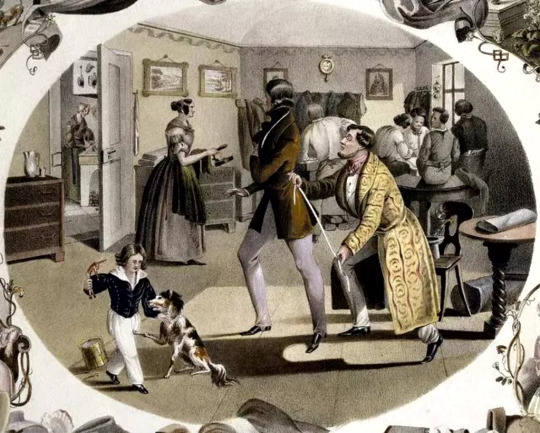
'The Tailor's Shop': 1838 lithograph by Carl Kunz and Johann Geiger
#1830s#fashion history#labor history#labour history#us history#sarah monroe#Eighteen-Thirties Thursday#united tailoresses' society#michael zakim#women's history#also i have been sleeping on michael zakim's book it's really good#there were many strikes by female garment workers in the time period#amazingly forward-thinking they were trying to get sick pay and retirement benefits#they also campaigned against prison labour#tailors#dress history#inequality#industrial relations#19th century
380 notes
·
View notes
Text
Pinned Post
Other Blogs
Main
Napoleonic
Commissions
Price varies depending on complexity. $30 minimum for non-commercial art. Contact with details for a price quote.
Art Usage
Do not use my artwork for roleplay. Do not use my artwork for “AI” image generators. Do not use my artwork for tattoos without contacting me. Do not repost my artwork to other websites without credit.
Ko-fi
Discord
https://discord.gg/vwGsctX2wA
Other sites
armored-hearts.com
kaxenart.com
https://inkblot.art/profile/kaxen
https://pillowfort.social/kaxen6
https://instagram.com/kaxenart/
Tag Link List under the cut
Stories
Handsome Hussars - Daring. Dashing. Daft.
Stripped of his family's title by the Revolution, cavalry Captain Géroux must prove his worth like everyone else under the new regime of Emperor Sennolino. His bravery, unquestioned. His honor, sparkling. His anxiety, unchecked. His wit, duller than his blade.
Will he get carried away by his own shenanigans, or by a cannonball?
Characters
Parzival - Captain of the 6th Hussars 2nd Squadron. His sense of justice flows like a mighty river but his wit is dammed.
Arsene - An aspiring artist who love violence.
Vang - A ruthless young man with dreams of a political career who will cut anyone down with either the pen or the sword.
Jardin - A trumpeter with more murder than song in his heart.
Kadir - A man of simple needs and simple wants. Owner of the world's stupidest horse.
Lucas - A war substitute who keeps to himself. The risks he takes are calculated, but he is very bad at math.
Eve - Kadir's wife and the official vivandiere of the 6th Hussars. Pretty, witty, and skilled with cast iron (offensively and culinarily).
Luc the Baby - The apple of Kadir’s eye
Leocadie - The laundress with the big guns
Rimbaud - A cruel and lazy man born under a lucky star
Louis the Asskisser - Colonel Rimbaud's self-appointed aide-de-camp. He desires the glory but not risk.
Emperor Sennolino - Emperor of Valois
Benoit - A salty wizard
Artichaut - A wizard who may or may not have blown up a street block during the Revolution
Promethee - A Revolutionary martyr
Traugott - Goth Hussar
Sauer - Heart Hussar
Cyberpink 1824 - A cyberpunk themed version of the early 19th century where rich men buy people to be “Comets” a mix of a living doll, entertainer, and personal acquaintance.
The Artist - A artist from the slums trying to make his mark on the world
The Patron - A rich man who thinks he is a good guy (he is not)
The Lithographer - The Artist’s Companion
The Bastard - Six eyes, all for being judgemental
TKverse - A cyberpunk setting where robots have no rights and humans only have 1% more for a legal technicality.
(Cyberpunk AU versions of the Handsome Hussars also take place in this universe)
Short Stories:
Lost in the Current
Armored Hearts Comics:
Kergat’s New Pilot
Military Dog
Characters:
TK-074 - A medical records administrator bot who has gone rogue because they want to be nice
Triginta - A hacker pangolin who skims money from the rich to help everyone he can
E - A sexbot who has not decided what e wants to be
Temir - An extremely morose mech pilot, almost only feels happy when he is piloting.
Kergat - A mech pilot handler
Shuen - A mech pilot trying to cover the shit sandwich of life with pink buttercream
Ibarra - A mech pilot with a polycule of mechanics.
Hummel - A pilot handler who wants all his pilots to be obedient dogs.
Mop-o-Bot-5000 - A popular cleaning unit
Finn - A mech pilot
Avidast - A colonel betrayed by his child is on a quest for redemption and has accidentally adopted 4 kids.
Vanderlar - A centuries-old Iolite elf having a mid(?)-life crisis
Chisel - Kind of a tool
Tolra
Ig
Ney
Zely
Obi
History Content
Napoleonic Tag
French Revolution Tag
Historical Figures
Louis-Francois Lejeune - Painter and Aide-de-camp to Marshal Berthier. Wrote a great memoir and I am emotionally obligated to give a better impression of his character than The Battle did.
Napoleon - y'all know who he is.
Joachim Murat - the real man who wears pink and many other things
Lasalle - The Hussar General.
Berthier - Lejeune's boss and Napoleon's Indefatigable Papers Guy
Larrey - A surgeon who for some reason sets me off on deranged AUs
Marcellin Marbot - Liar Little Meow Meow
Saint-Just - The pretty boy with one fork
Robespierre - The Sea Green Incorruptible
Mikhail Miloradovich -
Denis Davydov -
Jacques Chevillet - Trumpeter for the 8th Chasseurs and my new son
Fanart
Citizen Sleeper
Murderbot Diaries
Armored Core VI
Darkest Dungeon
Art That is Not Flat
3dsculpting
3dprinting
ball-jointed dolls
plushies
sewing
wigmaking
20 notes
·
View notes
Text
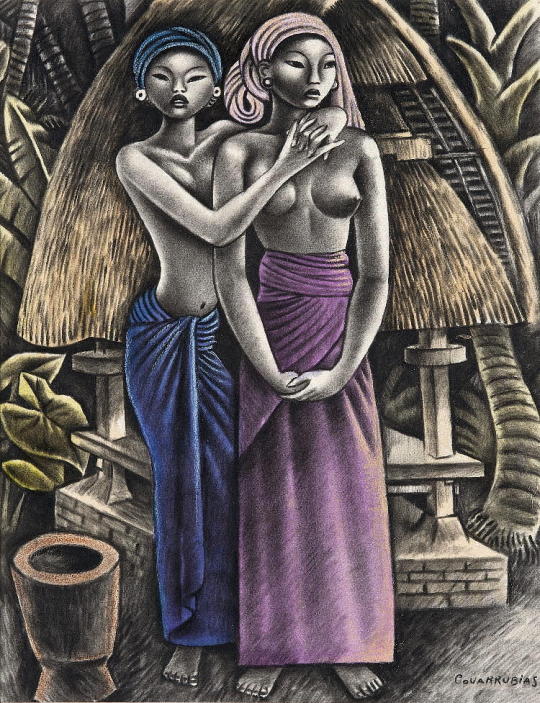
MWW Artwork of the Day (10/7/23)
Miguel Covarrubias (Mexican, 1904–1957)
The Rice Granary (c. 1935-36)
Watercolor & charcoal on paper, 55 x 42 cm.
Private Collection
"The Rice Granary" gives the viewer potent look into the lives of Balinese women, and their relationship with each other. Covarrubias produced at least four non-editioned versions of "The Rice Granary," the first of which was illustrated in his book, "Island of Bali." This one here is the watercolor and charcoal version. These are in addition to lithographic prints produced. The two girls in the present version are clad in blue and magenta, and make the present version arguably the most outstanding amongst the four in terms of colors. Covarrubias manages to bring about a stunning sense of the extraordinary in the benign, drawing the viewer into the picture, to the focused images of the women, brightly dressed against their drab surroundings.
4 notes
·
View notes
Text
ugh i don't want to read about lithographic inking systems but i want to work on my resume even less
did u kno lithographic printing inks are non-newtonian fluids and exhibit both "masstone" (colour of light reflected by the pigments, in a thick layer) and "undertone" (colour of light reflected off underlying paper and transmitted through pigments, in a thin layer)
7 notes
·
View notes
Text
film reviews: Ivan’s Childhood (1962, Andrei Tarkovsky)
Synopsis: Throughout the film are frequent flashbacks and dream sequences. A boy has an idyllic dream of his life before the war, then wakes up in a ruined house, and wades through a tree-studded marsh in the dark, passing under barbed wire, then swims across a river. He arrives at a military encampment and demands to speak to the commanding officer, and is shown into his residence. The boy tells the commanding officer, named Galtsev, to phone headquarters and report that “Bondarev” has arrived, and after much persuading the officer complies. The boy, named Ivan, is revealed to be a scout for the Russian military and has a top-secret message on German locations to deliver to headquarters. Gryaznov at headquarters tells Galtsev to treat Ivan well, as he has a hot temper. Two officers, Kolin and Katasonych, are sent from Headquarters to deal with the boy. They arrive quickly. The next day, Galtsev questions the officers about Ivan, and they tell him his backstory: his mother and sister were killed by the Nazis, and his father was killed in action. He joined a group of partisans who were eventually surrounded, and they put Ivan on a plane to safety. He was sent to an orphanage but ran away, and was picked up by the military. Burning with vengeance, he serves the army on reconnaissance missions, but is eventually sidelined and threatened with being sent to military school. He tells them he will just run away again, and tries to do so. After this they give up and let him continue serving the military. A few days at the camp pass. Kolin aggressively pursues a pretty nurse named Masha, who remains cold to his advances. Galtsev shows Ivan a book of German lithographs, and Katasonych repairs the company phonograph. Eventually Katasonych is called away back to headquarters and leaves without saying goodbye to Ivan, wounding him. Galtsev accompanies Kolin and Ivan in a boat to ferry Ivan across the river back into German-controlled territory. It is revealed Katasonych was shot by a sniper, and the story of him being called back to headquarters is a fabrication to spare Ivan’s feelings. The three’s boat slips silently through the darkness into the marsh, whence they get out and continue on foot. Ivan parts with them and heads back into enemy territory. Kolin and Galtsev return across the river. Time passes. The war ends and Kolin has been killed. Galtsev is present at the Fall of Berlin, and helps retrieve Nazi files on Russian partisans executed by the Nazis. He find’s Ivan’s photo among the files of the deceased. The film ends with Ivan and his sister playing with friends on the beach in a time before the war, as their mother looks on.
Review: I never expected a war film to be so beautiful. The cinematography is gorgeous and dreamlike, punctuated with occasional moments of stark brutality befitting the subject matter. The non-linear progression of the storyline adds to the artistry of the film, and elevates it past typical war movie fanfare into something much higher. This is an incredibly well-made movie, and is one of the finest war and anti-war films ever made. I heartily recommend watching it. The film is on YouTube, and you can watch it here.
#Ivan's Childhood#films#movies#cinema#Russian cinema#Soviet cinema#film#film recs#movie recs#film reviews#movie reviews#Andrei Tarkovsky
4 notes
·
View notes
Photo

midsummer night’s dream
stone lithography, 5x8″
02/13/2023
1 note
·
View note
Text
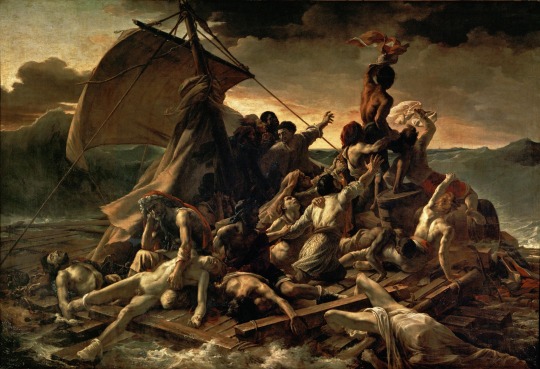
Le Radeau de la Méduse, 1819, Oil on canvas, 491x716 cm, Paris, musèe du Louvre
Theodore Gèricault was a french painter, from the Romanticism movement.
From a wealthy family, in 1798 he moved to Paris where he attended the atelier of Vernet and then Guèrin, but his training and stile was heavily influenced by Gros and the study at the Louvre of Flemish, XVIII century Dutch and Venetian painting. In 1816 he traveled to Italy, where the study of the works of Raphael, Michelangelo and caravaggio greatly influenced his mature style.
Back in Paris after the italian grand tour he met Delacoix. One of his last travel was in Englan, in 1821, where he learned about the free, non academic painting of Constable and Lawrence. With this knowledge he contributed to the overcoming of the academic tradition in France.
In addiction to his production of studies, painting and lithographs, he modeled some interesting figures in wax.
The painting: Le Radeau de la Mèduse
Painted in 1818, was presented at the salon in 1819, a controversy painting, for the fusion made with romantic dramatic intensity between classical composition and dynamic rapresentation of reality.
The subject of the painting was a rather dramatic event in the history of the french navy. In 1816 the Meduse, a frigate, set sail from the cost of France to reach Senegal. Arriving in sight of Cap Blanc, the inexperience of the captain prevented the recognition of a infamous, but rather known sandy bank off the coast of Mauritania. So the ship tilted to one side, the captain and all the equip tried to save the ship, but every attempt failed. The only thing remained to do was to abandon the ship and reach the cost of mauritania. With only 6 lifeboats they had to set up a makeshift raft. On it boarden 149 man and 1 woman. It's a dark story what happen next, fights boke out, there were suicides, murders, desperation and cannibalism. After 13 days adrift finally what remained of the draft was spotted, of the 150 people, only 15 were found alive, wich five of them died during the night of the rescue.
In 1817 two survivors wrote a book telling what happened during those 13 days in the ocean.
And here it's were we start talking about the painting.
Gericault decided to paint all the shades of physical pain, moral anguish in the mass of people on the raft, from the father in foregroud, intoxicated by the pain of losing his son, to the men who are trying to make themself more visible to the ship in the backgorund. The gugantic dimensions and the epic style were finally used to rapresent the sufference of normal people. The scene is a romantic metaphore of human life, in perpetual struggle with adversity and destiny divided between despair and hope, life and death.
The scene is constructed onto diagonal lines with two arriving ponts, one is the raft shaft, the other the shirt blowing in the wind. Theres a muvement, a vertical tension to the horizont. The wind blow in the opposite direction, moving the raft away from salvation. The red accents of the light onto varius object make the drammatic scene more dramatic.
The painting is romantic in his intent and subject, but his form is classic, the drawings define the bodies, the chiaroscuro define the dinamic. The bodies are like heroes and atlethes, organaized in a piramid structure, at the point of the pyramid theres a body that remainds of the belvedere torso, an antient statue very known during the neoclassicism period.
When i was 13 i read about this event, without realizing it, one of my favorite book is Ocean sea by Alessandro baricco, an italian wrtiter, who described what happened on the raft in the middle of the book. Five years forward i was studing art and i came across this bauty, and i hiperfixated on it (as one does) and now the book, wich already was one of my favorite just made more sense.
#meduse#art academia#dark academia#art#art history#light academia#painting#academia#chaotic academia#classic academia#theodore gericault#the raft of the meduse#the raft of the Medusa
17 notes
·
View notes
Text
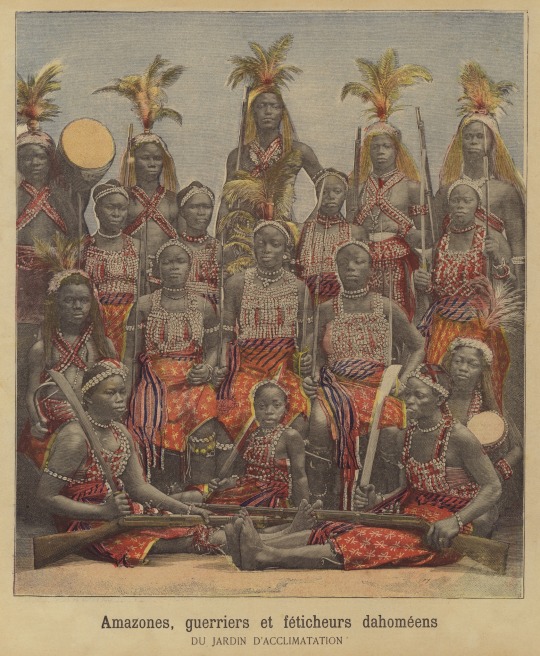
From the late 1600s to the early 1900s, the West African kingdom of Dahomey (in present-day Benin) was protected by an all-female regiment of warriors. Depicted here in a 19th-century lithographic print, these women were widely known as fierce defenders of their realm.
The Warriors of This West African Kingdom Were Formidable—and Female
In the 17th century, Dahomey flourished under the protection of its all-woman military regiment that inspired Viola Davis's acclaimed film The Woman King.
— By Rachel Jones | September 14, 2022
Call it mere coincidence or a masterstroke of tourism-focused timing. Earlier this year, when news spread that a hundred-foot-tall statue of Queen Tassi Hangbe had been erected in the West African nation of Benin, one could almost hear the faint click clack of calculators adding up the revenue from future travelers inspired to visit after having seen the movie The Woman King.
Historical extravaganzas generally fare well at the box office, especially ones involving vivid costumery and spirited combat. But this latest entry benefits from perfect timing once again, in the wake of the 2018 blockbuster film Black Panther. That epic tale of the fictional African nation of Wakanda was the perfect precursor for a movie steeped in the lore and history of a real-life group of African female warriors, whose fierce prowess stunned all they encountered.
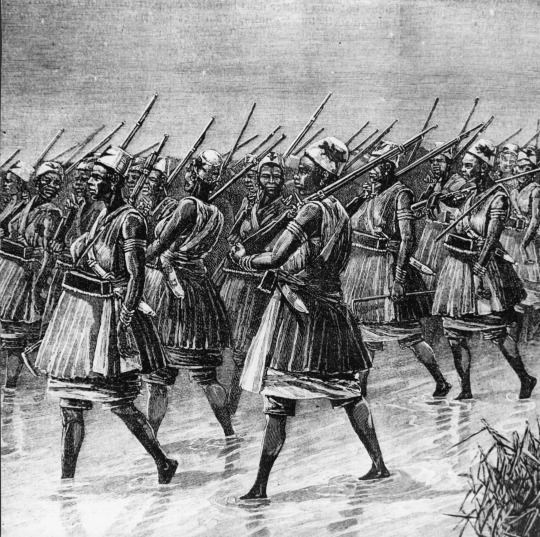
Dahomey warriors crossing a creek. Although members of the all-female military unit are often called Amazons for being larger than life, historians say the colonial term doesn't do justice to these very real women and their accomplishments. Collection Paul Almasy/AKG-Images
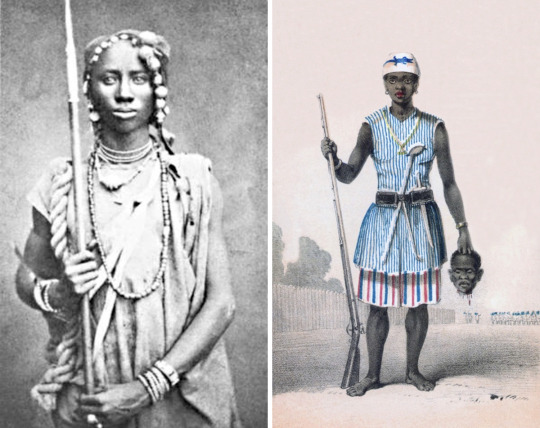
The women warriors of Dahomey were known by many names in the Fon language—including Gbeto, Agojie, and Mino. Far from the sleek costumes of their film counterparts, they wore tunics and long shorts during combat. Pictures From History/AKG-Images
But conferring the label “Amazons” on these women soldiers of West Africa’s Kingdom of Dahomey is a non-starter for historian Pamela Toler.
“In addition to it being a decidedly colonial reference, you’re sort of reinforcing the idea that they are exceptions, and that no ordinary woman could be larger than life,” she says. “That’s a very European perspective on these amazing women.”
Toler, author of the book Women Warriors: An Unexpected History, says it’s important to know the full story of the all-female regiment of warriors who existed from the late 1600s to the early 1900s. In fact, an examination of their origins and the society they arose from provides a more multidimensional image of these women warriors and the legacy they left behind.
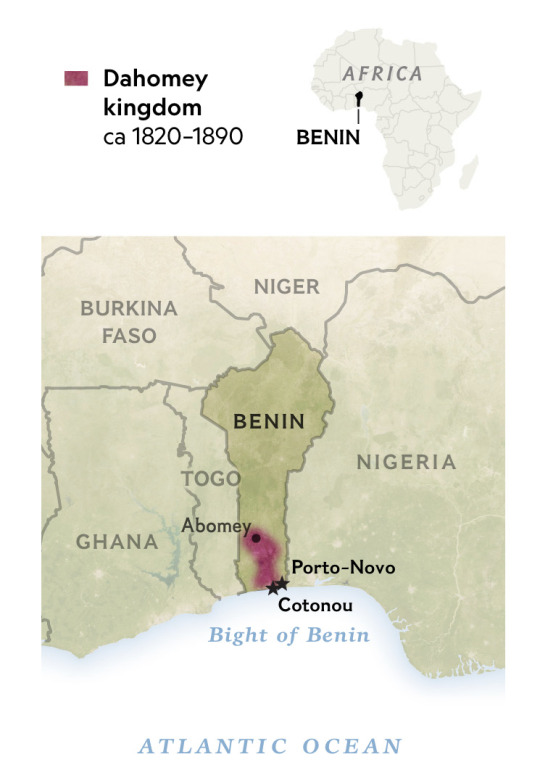
Christine Fellenz, NG Staff. Source: J. Cameron Monroe, Urbanism on West Africa’s Slave Coast, 2011
The Rise of The Kingdom of Dahomey
Until recent decades, the vast majority of popular culture depictions of Africa have characterized the continent as an uncivilized, agrarian milieu before the arrival of Europeans like Portuguese explorer Henry the Navigator in the 15th century.
On the contrary, powerful ancient civilizations flourished throughout the continent, including the prehistoric Land of Punt and the kingdoms of Aksum and Nubia in northeast Africa; the West African empires of the Ashanti, Mali, and the Songhai; and the Kingdom of Zimbabwe.

An engraved map of Dahomey and its environs, from the 1793 The History of Dahomey by slave trader and historian Archibald Dalzel.
In West Africa, Dahomey carved an indelibly powerful legacy. As outlined in the Encyclopedia Britannica, the kingdom established a well-organized government in which the king was considered semi-divine and had absolute control over economic, political, and social affairs. He was supported by a council of officials chosen from the commoner class because of their allegiance to the king and commitment to the nation’s development.
"As the blacksmith takes an iron bar and by fire changes its fashion, so we have changed our nature. We are no longer women, we are men." — Dahomey and The Dahomans, Frederick Forbes, British Naval Officer
Its geographic access to the sea, and the strategic prowess of its leaders, helped Dahomey vanquish other coastal kingdoms such as Allada and Whyda. But the emergence and expansion of the transatlantic slave trade ultimately helped seal its dominance. It’s estimated that from the 1720s until 1852, when the British imposed a naval blockade, Dahomey’s rulers sold hundreds of thousands of people from neighboring tribes and nations to the British, French, Portuguese, and others.
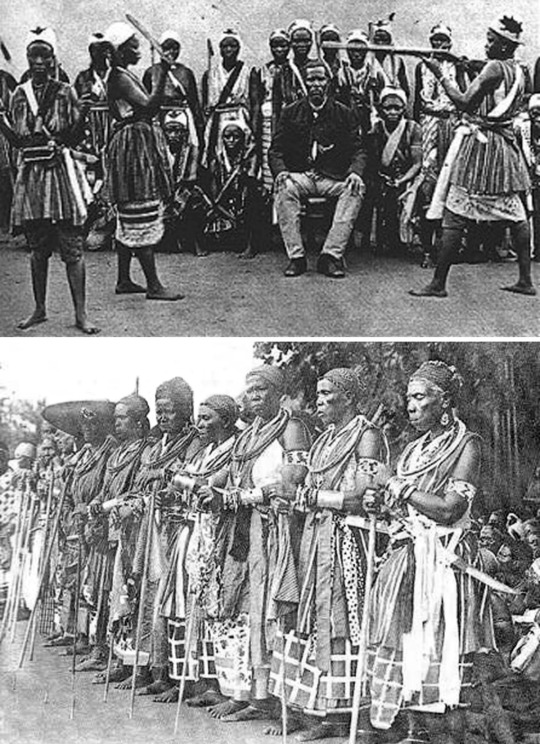
The Kingdom of Dahomey rose to dominance in West Africa on the strength of its disciplined army and strategic leadership—but also through its role capturing and selling hundreds of thousands of people from neighboring nations to the transatlantic slave trade. Pictures From History/AKG-Images
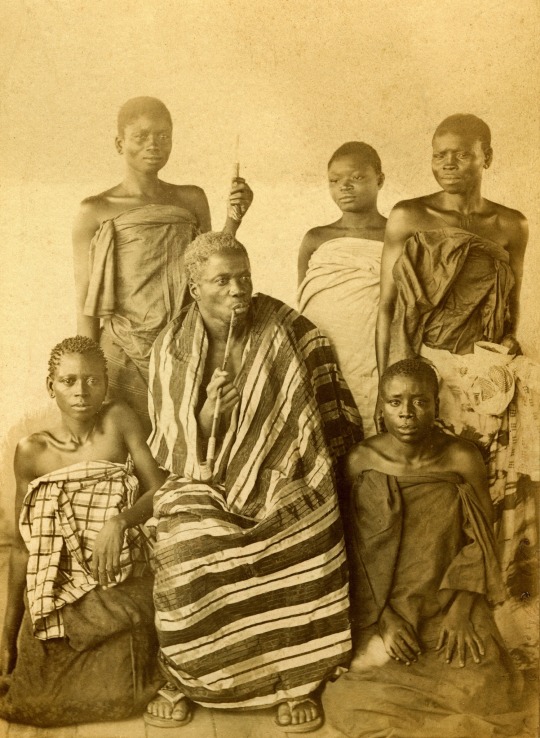
Behanzin, the last king of Dahomey, with his family in 1894. Although his predecessor had allowed France to claim the city of Cotonou as a protectorate, Behanzin was strongly opposed to colonization and launched an ill-fated last push to end European interference.
Besides the slave trade, Dahomey fought to acquire fertile land for farming and to boost its trade in palm oil. Taxes and duties collected from those two ventures helped Dahomey build an imposing military presence.
Eventually, continuous raids on neighboring communities significantly reduced the number of males, which set the stage for women to step into the role of guardians and protectors.
Origins of Dahomey’s Women Warriors
One account of their origins contends that they were elephant hunters who served under King Houegbadja, the third king of Dahomey, from around 1645 to 1685. Known as Gbeto in the Fon language, UNESCO’s Women in African History portal writes that they, “hunted all kinds of game, including elephants, the most valuable and difficult of animals to kill.”
Elephants were almost completely wiped out from the area by the mid-19th century. The Gbeto were then integrated into the army of women soldiers. They wore brown blouses and brown-and-blue knee-length shorts.
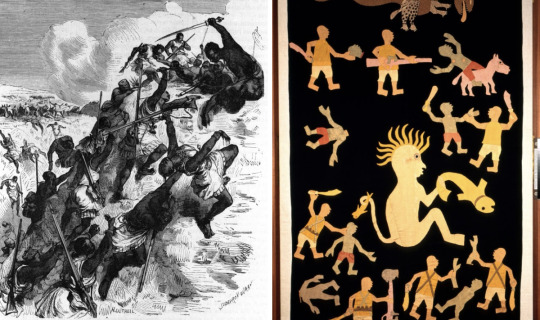
Left: An engraving of two rival tribes in the midst of battle in Dahomey, 1879. Right: Wall hanging with battle scenes between Europeans and Dahomeans, from the Palace at Abomey in present-day Benin.
These women fighters were also known by other names in the Fon languages, including Agojie, Agoji, Mino, or Minon. But the prevailing origin story of the Dahomey women warriors is that the group was formed at the behest of Queen Hangbe, daughter of Houegbadja, who rose to power after her twin brother Akaba died under mysterious circumstances in the early 1700s.
The fact that Hangbe amassed a squadron of women willing to die protecting her and their kingdom was an impressive feat in the deeply patriarchal Dahomey society.
These female fighters were not concubines or servants obliged to defer to any man’s whims. And they didn’t just spring out of the ether; historians have long noted the prominence of women in some African societies. In the book Continent of Mothers, Continent of Hope: Understanding and Promoting Development in Africa Today, author Torild Skard writes about the Dahomey warriors:
“(They) were renowned for their zeal and ferocity. The most fearsome were armed with rifles. There were also archers, hunters and spies. They exercised regularly to be physically and mentally fit for combat. They sang, ‘Men, men stay! May the men stay! May they raise corn and grow palm trees … We go to war.’ When not in combat, they guarded the royal palaces in Abomen and grew fruit and vegetables. They could also go out and take captives to sell as slaves.”
The Reality Behind The Myths
Though it’s tempting to think that Dahomey’s female warriors may have very much resembled the sleek, ferociously glamorous fighters depicted in Black Panther, historian Toler says the reality is quite different.
“By the 1800s, contemporary accounts of them is that their uniforms were so similar to their male counterparts, people fighting against them don’t realize they’re women until they’re up close in hand-to-hand combat,” Toler says. “They most likely wore long shorts, a tunic, and a cap, not the sexualized almost bathing suits you’d see in modern-day depictions of female warriors.”

In addition to their talents in hand-to-hand combat, Dahomey's women warriors were experts with a bow and arrow. The most skilled members of the unit were selected to be archers, using hooked and poisoned arrows to stop their foes. Look and Learn/Bridgeman Images
Tales of their exploits astonished many European explorers and slave traders, and the region’s female fighters helped burnish Dahomey’s reputation as a force to be reckoned with.
“By all accounts, they were fearsome, excellent marksmen,” Toler says. “They were skilled with hand-to-hand fighting, using weapons that were a lot like machetes. And there was absolutely nobody there to tell them that they shouldn’t be involved in combat, or that they didn’t have the upper body strength as you heard in European and North American history until recently.”
While most records of Dahomean warfare involve battles with neighboring kingdoms for control of coastal cities, a shift began in the late 1870s after the kingdom agreed to let France claim the city of Cotonou as a protectorate. By 1883, nearby Porto-Novo, one of Dahomey’s rivals, was similarly designated.
But in 1889, a new king came to power. King Behanzin balked at European interference and eventually ordered slave raids and other hostilities against those French protectorates. This led to Second Franco-Dahomean War, which lasted from 1892 until 1894, and which some historians point to as end of a dominant role for the Dahomey women warriors.
Legacy of The Women Warriors
Historians like Toler are eager to see if The Woman King will yield a more contextual depiction of these women who chose a path that rejected limitations or gender restrictions. That’s critically important, as the image of the African woman on the global stage has a long way to evolve toward becoming empowered versus impoverished.
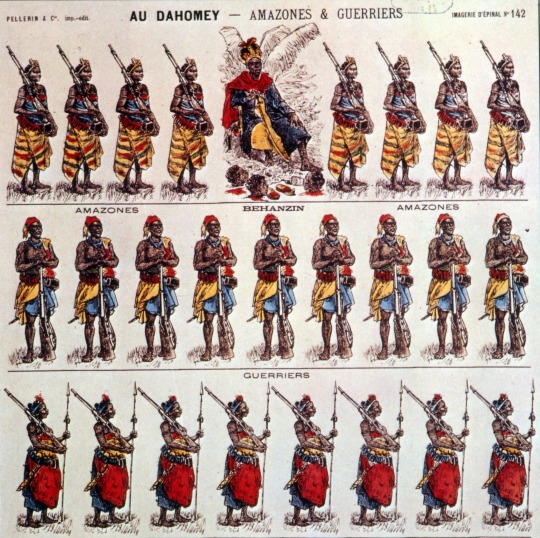
Warriors of Dahomey, a series of Épinal images created by French draftsman, illustrator, and printer Jean-Charles Pellerin in France in 1870. Pellerin famously pioneered this style of printing that uses bright colors to depict a popular subject.
There is no arguing that women made significant contributions to the development of African nations as traders, educators, cultivators, priestesses, healers, and more. And though leaders such as Ana Nzinga, queen of Ndongo, Kongo prophet Dona Beatriz, and Idia, queen mother of Benin—joined by modern-day heroines like Nobel Peace Prize winners Wangaari Maathai and Ellen Johnson Sirleaf—amplify the power and prowess of African women, art curator and historian Alexander Ives Bortolot summarizes the remaining challenge:
“There can be no doubt that important and celebrated women existed in other periods of African history, but prior to the era of contact with Europe, written records of their names and achievements simply do not exist. Indigenous narratives about them have not survived to the present-day or have yet to be recognized and recorded. As the study of African history continues, however, the identities of other notable African women will surely be revealed.”
Perhaps the rise in depictions of real-life African women as powerful and self-defining can help achieve that goal. The more people who know about the Dahomey women warriors, the better, Toler says.
“They proved that women are stronger than society thinks they are, than even they themselves may believe,” she says. “They had the choice to fight, and it was an entirely appropriate one.”
3 notes
·
View notes
Text
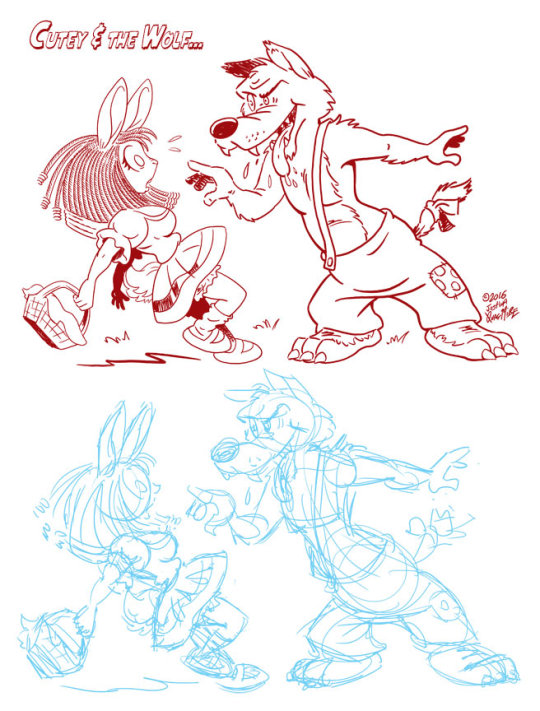
I also found this pix that includes the original rough scribbles - Y'see, my method being: scrawl out a lot of lines - then puzzle out which of them constitutes a character…
*Note: I generally do my rough layouts with a color that simulates Non-Photo-Blue, not that there's any real point to that any more – just mostly because I'm used to working that way, from back in the days when they actually shot negatives on lithographic film…
2 notes
·
View notes
Text
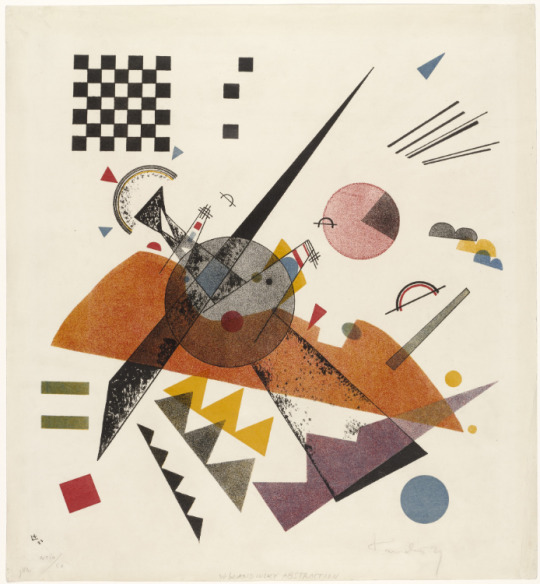
Vasily Kandinsky
Orange
Lithograph
composition: 15 15/16 x 15 1/8" (40.5 x 38.4 cm); sheet: 18 7/8 x 17 3/8" (48 x 44.2 cm)
This represents the culmination of our journey. We've transformed from thoughts coalesced from the aether, created a sense of identity, carried on the traditions of our family and the society we were birthed into, broke free to become our own selves, questioned everything, endured loss, continuously evolved, and finally ceased to be. So what comes next? Perhaps an existence where there is no boundary between thought, reality, and the ethereal. We return to where we were at the beginning but with a bit more experience in our energy. This piece was chosen for its embodiment of the final non-physical essence of transformation, returning to the intangible, ready to be drawn into thought and experience life once again.
https://www.moma.org/collection/works/70099
0 notes